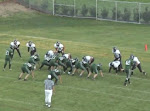
Today's Story: Susan Boyle's dream come true: 'I Dreamed a Dream' sells most copies in first week for 2009
By Olivia Smith
Susan Boyle, queen of the pop charts.
The matronly Scottish singer who rose to unlikely fame on British reality TV has a exclamation point to add to her fairytale success story. Her first album has not only debuted in the number one spot on the Billboard charts - it's the biggest selling debut album from any female artist since SoundScan began tracking record sales in 1991.
The 47-year-old church singer, who makes her home in Blackburn, Scotland, released her album "I Dreamed a Dream" on November 23, and it sold 701,000 copies in its first week, Billboard.com reports.
That beats 2009's previous big seller, Eminem, whose "Relapse" moved 608,000 copies in its first week. The last album to better Boyle's sales was AC/DC's "Black Ice" in October 2008, with 784,000 records sold.
In the SoundScan era, only SnoopDogg had a more successful debut, with "Doggystyle," which sold 803,000 copies back in 1993.
On this week's charts, Andrea Bocelli's "My Christmas," a holdover, came in second place during a period that saw a number of major releases. "American Idol" runner-up Adam Lambert's "For Your Entertainment" debuted in the number 3 spot after selling 198,000 copies. Rihanna's "Rated R" was in the fourth spot with 181,000 albums sold, and Lady Gaga was in fifth with her eight-song EP "The Fame Monster," which sold 174,000 copies.
It's been a roller coaster year for Boyle, who swept the Internet via YouTube after her dramatic debut on "Britain's Got Talent," and became perhaps the closest thing imaginable to a true overnight success.
While she has since had her share of struggles, including a brief stint in a mental hospital last summer due to stress and exhaustion, the overwhelming popularity of her debut may make the perils of fame well worthwhile.
"It's been bloody fantastic," she told the BBC Scotland this week of the album's success. "Pretty moving, really, because it's a chance for me to prove, really, what I'm capable of.
"All I can say is thank you very much for those who supported me and I hope you enjoy the album."






